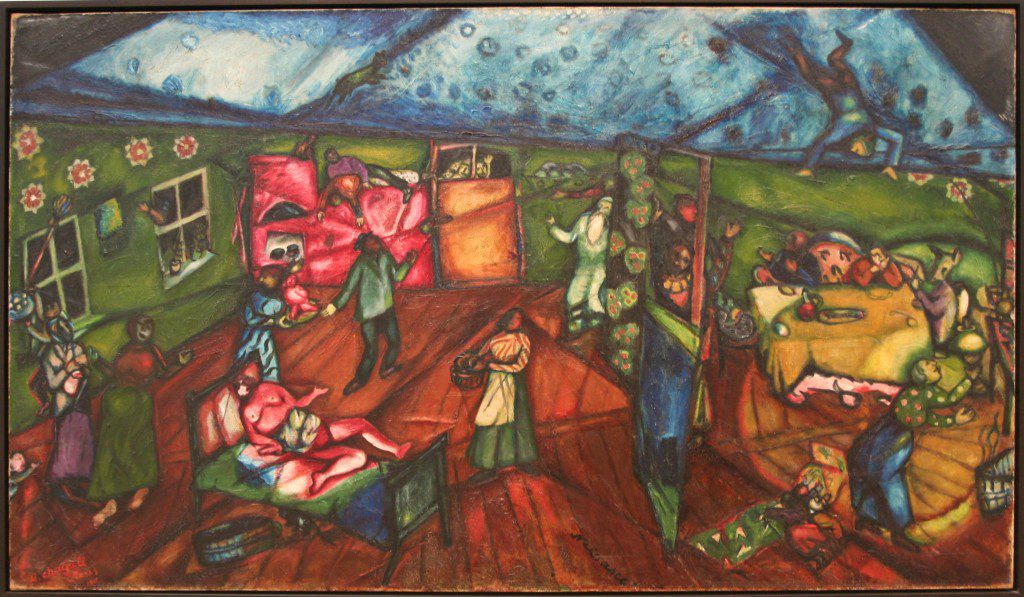I haven’t been writing much about gender and gender dysphoria recently, mostly because I find that being pregnant significantly relieves my own experience of alienation from femininity. The big exception to this is my relationship with labour and delivery, so I want to talk a bit about the challenges of giving birth as a genderqueer woman.
Birth narratives (our cultural stories and ideals surrounding birth) are generally constructed with a view to serving the heterosexual cisgender female community. There are really obvious reasons for this, and I don’t think that it’s a problem on a wider social level. The reality is that you can’t actually make society work in a way that is equally accessible to everyone, for the simple reasons that you quickly find that making things more accessible to one marginalized group will often make it less accessible to another, and there’s even a risk of marginalizing formerly integrated groups in the process. The simple fact is that genderqueer and transgender birthing is an extreme minority experience; even in the lesbian community, “femme” women are much more likely to become birth mothers. So it makes sense to surround birth with stories, images and ideals that resonate with a traditionally feminine psyche.
It is, however, a problem for the minority in that it can lead to a kind of psychological vacuum when faced with the prospect of birthing. It becomes necessary to try to formulate some kind of narrative for birth without the aid of a wider community that is looking at it from the same perspective.
Giving birth is a frankly terrifying and overwhelming psychological event. Having done it before does not necessarily diminish this – I’ve experienced vastly varying degrees of fear and anxiety with my 9 pregnancies, and overall I’d say that being an experienced birther can either be helpful, or it can make things worse, depending on a whole host of factors.
What does definitely make a difference, at least in my experience, is having a coherent way of thinking about the birthing experience as a fundamentally positive one. Yeah, yeah. I know. You’re giving life to a new human being and it’s all very miraculous and beautiful and you can just focus on how lovely the baby is going to be at the end and that should put it right into perspective. (FYI, if you are male, and this is your basic position, don’t tell me about it. I will have you fed to lions for the greater good. You’ll really love having your intestines gnawed on while you lie writing on the sand. You just need to offer it up and focus on how beautiful your martyrdom will be. Perspective.)
The fact is that a story, in order to be effective, has to not only have a teleology but also a methodology. If the story is any good, there has to be a point in it where the hero can no longer see through to the end – when the confrontation with the enemy becomes, in effect, the whole of their existence and the meaning of their suffering and sacrifice becomes a dim and far off hope that lies on the other side of an impossible horizon. This is the part where you need to have some kind of romantic or heroic idealization of your action in the present to carry you through. (The fact that the ideal will inevitably fail and disappoint, and that you’ll be left thrashing about, devoid of any coherent psychological resources is, of course, also true – but since that generally doesn’t happen until you’re well past the point of no return it’s kind of moot.)
What this means, is that in birthing you don’t just need a narrative in which having a baby will be a good, but you also need a narrative in which you are able to adequately confront, cope with, deal with, survive or avoid the pain that is involved in bringing the baby into the world. You’ll notice I put forward a variety of different verbs there, and that’s because different narratives will construe the pain in different ways. Sometimes as a natural process to be welcomed, sometimes as an obstacle to be negotiated, sometimes as a problem to be managed, sometimes as an enemy to be bested.
Behind each possible narrative, there lies an imagery of birth and of the birthing woman. This imagery may be a passive one, in which the doctor, the anaesthesiologist, your doula, your birth partner, your support team, etc. will take care of you. Or it might be an imagery of empowerment, in which you body is actively engaged in performing an archetypally awesome feat. Or it might be an imagery of serene acceptance, in which you simply surrender to the wisdom of your body and allow it to do what it needs to do.
Imagery does not, however, exist on a merely abstract plain. Each of these approaches has to be activated by a set of concrete pictures and practices. If you’re going for a highly managed birth, a whole series of medical rituals have to be in place to secure the impression that you’re being properly cared for. Hospital tours, small routine interventions in labour, regular professional reassurances, epidurals, what have you. If you’re surrending to the flow of nature, you might rent a birthing pool and practice hypnobirthing, picture your cervix as a slowly opening flower during the early stages of labour, or learn traditional indigenous birthing chants for when you want to scream.
The difficulty for someone on the genderqueer/trans spectrum is that the available practices are generally formulated assuming a traditionally “feminine” personality. And this is where it becomes problematic. I know, for example, that most of the time when I pick up a book or read an article on labour and birthing my reaction is either one of supercilious disdain, or of visceral rage. The ideas that are being put forward don’t gel with my psychology. Instead of causing me to feel comforted or empowered, they make me feel alienated and/or irritated. Because the narratives that are supported culturally don’t speak to me, I’m kind of pushed back on my own resources in order to try to develop creative narratives of my own to make sense of the experience.
Now, as if happens I’m a fairly creative person so I do pretty well at this, but it’s still difficult. For one thing, it’s very hard to find support that actually feels helpful. Midwives are definitely way better than doctors but there’s still generally a felt disconnect – a sense in which I feel that it’s impossible to communicate what I’m actually experiencing without coming across as some kind of freak show. Talking to female friends is of limited use because they’re inclined to either offer their positive experiences – which generally resonate with the prevailing narratives – or present their experiences of disappointment and betrayal when the prevailing narratives failed for them. If I raise a question like “How do you deal with the fact that there comes a point in labour during which rational functioning seems to be suspended, and volition is tenuous at best?” they just look at me blankly. Apparently, this is not a concern for most women. It doesn’t even refer to a set of objects that they’re conscious of while labouring or preparing for birth.
On the other hand, if I talk to my male friends they can totally understand why I could be disturbed by questions of autonomy and rationality, but there’s a kind of an insuperable experiential chasm – so long as the questions are being discussed wholly in the abstract they’re fine, but men become increasingly useless and uncomfortable the more it becomes clear that there are actual wombs involved. In most cases, they either end up giving a blithe analysis that makes me want to kick them in testicles, or they fall silent and change the subject.
And, of course, if I talk to other gendqueer women their response is usually something like “This is why I would never want to get pregnant.”
So, do I have a solution to this problem? Well, several. Kind of. My best one is to offer the narratives that I’ve come up with myself through experimentation, and to give a basic evaluation of how each of them has worked. Perhaps other women who find that traditional “feminine” birthing narratives don’t work well for them will find something of use in my experience. Perhaps they’ll share their experiences in a way that is helpful to me.
Assuming I don’t go into labour tonight, we’ll have fun with that tomorrow.
Image “Birth” by Marc Chagall 1911/12, public domain. Photographed by Sharon Mollerus, under Creative Commons License.













